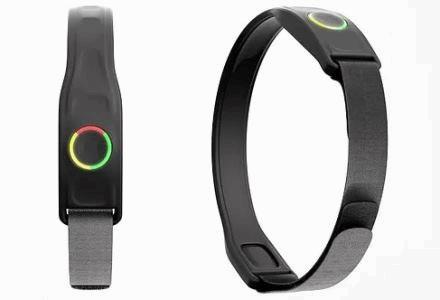Bad Cardiac Rhythm Causes The Blues

By Bob Marshall, Chief Editor, Med Device Online

Atrial fibrillation (also called AFib) is a quivering or irregular heartbeat (arrhythmia) that can lead to blood clots, stroke, heart failure, and other heart-related complications. At least 2.7 million Americans are living with AFib, according the American Heart Association (AHA). A worldwide study of AFib epidemiology from 1990 to 2010 estimated its prevalence at 33.5 million males and 12.6 million females in the year 2010.
During AFib, the upper chambers of the heart (the atria) do not beat effectively to move blood into the ventricles, which can result in clotting. If a resulting clot breaks off, enters the bloodstream and lodges in an artery leading to the brain, a stroke results. About 15–20 percent of people who have strokes have this heart arrhythmia, and this clot risk is why patients with AFib are often put on blood thinners.
The AHA provides these examples of how patients have described their experience:
“My heart flip-flops, skips beats, and feels like it’s banging against my chest wall, especially if I’m carrying stuff up my stairs or bending down.”
“I was nauseated, light-headed, and weak. I had a really fast heartbeat and felt like I was gasping for air.”
“I had no symptoms at all. I discovered my AF at a regular check-up.”
This third example is most troubling – due to a lack of symptoms and the intermittent nature of AFib, many people are unaware they have a serious condition that doubles the risk of heart-related death and is associated with a 5X increased risk for stroke. In addition, the prevalence of AFib increased by nearly five percent between 1990 and 2010, and the mortality rate doubled during the same time period, according to the above study.
Historical means of detecting AFib have included traditional electrocardiographs (ECGs) used during stress tests, Holter monitors, and event monitors. Holter monitors are portable ECGs worn to measure and record heart activity, continuously, over a period of 24-48 hours. The recordings then are reviewed by medical professionals to look for occurrences of AFib. Event monitors are used over a longer period of time (up to 30 days), and they are triggered by the patient when that patient experiences an irregularity, or “flutter,” and pushes a button to note the sensation. Recordings from just prior to the trigger are sent to medical professionals, who review the irregularity experienced by the patient and recommend further action, if necessary.
These means of monitoring are able to help identify whether a patient is experiencing AFib in some cases, but given the intermittent nature of the condition, such devices’ use for limited amounts of time can fail to capture proof of the cardiac rhythm problem. The electrodes attached to the skin can cause irritation — especially in the case of an event monitor, where the electrodes have to be removed and replaced every day or two over a period of several weeks. Additionally, it is a nuisance to remove Holter and event monitors for showering and bathing, and subsequently to reconnect them.
Cardiovascular Connected Healthcare Provides A Solution
All of these challenges led Dr. David A. McManus, an electrophysiologist and cardiologist at UMass Memorial Medical Center, to research with his colleagues and develop an alternative device. McManus is clinical director for Mobile Sense Technologies in Farmington, CT, as well as inventor of the company’s SensBand. The SensBand, claims to fill the gap between short duration adhesive monitors and long duration sub-cutaneous implants. It connects with the patient’s smartphone to provide continuous monitoring for AFib, and to enable data sharing with the patient’s doctor. Connected cardiovascular care provides a means to better engage patients in managing their own care, and is aimed at producing value-based outcomes. Detecting and monitoring AFib reduces stroke risk, improves the quality of life for patients, and reduces the overall cost of healthcare.
 In 2013, McManus published in HeartRhythm the article A Novel Application for the Detection of an Irregular Pulse using an iPhone 4S in Patients with Atrial Fibrillation. In the piece, he describes a clinical study of 76 adult subjects with persistent AFib. Pulsatile time series recordings were obtained before and after cardioversion using an iPhone 4S camera. A novel smartphone application conducted real-time pulse analysis using 2 different statistical methods. The sensitivity, specificity, and predictive accuracy of both algorithms were examined using the 12-lead electrocardiogram as the gold standard. An algorithm combining the 2 statistical methods demonstrated excellent sensitivity (0.962), specificity (0.975), and accuracy (0.968) for beat-to-beat discrimination of an irregular pulse during AFib from sinus rhythm.
In 2013, McManus published in HeartRhythm the article A Novel Application for the Detection of an Irregular Pulse using an iPhone 4S in Patients with Atrial Fibrillation. In the piece, he describes a clinical study of 76 adult subjects with persistent AFib. Pulsatile time series recordings were obtained before and after cardioversion using an iPhone 4S camera. A novel smartphone application conducted real-time pulse analysis using 2 different statistical methods. The sensitivity, specificity, and predictive accuracy of both algorithms were examined using the 12-lead electrocardiogram as the gold standard. An algorithm combining the 2 statistical methods demonstrated excellent sensitivity (0.962), specificity (0.975), and accuracy (0.968) for beat-to-beat discrimination of an irregular pulse during AFib from sinus rhythm.
The application was further evaluated in a study of 2000 people in India. McManus has stated that his goal is simple. He wants to keep people with AFib living longer and living well. “If the disease is diagnosed in time, it can go from life-threatening to an inconvenience – something you die with, not from,” he said.
